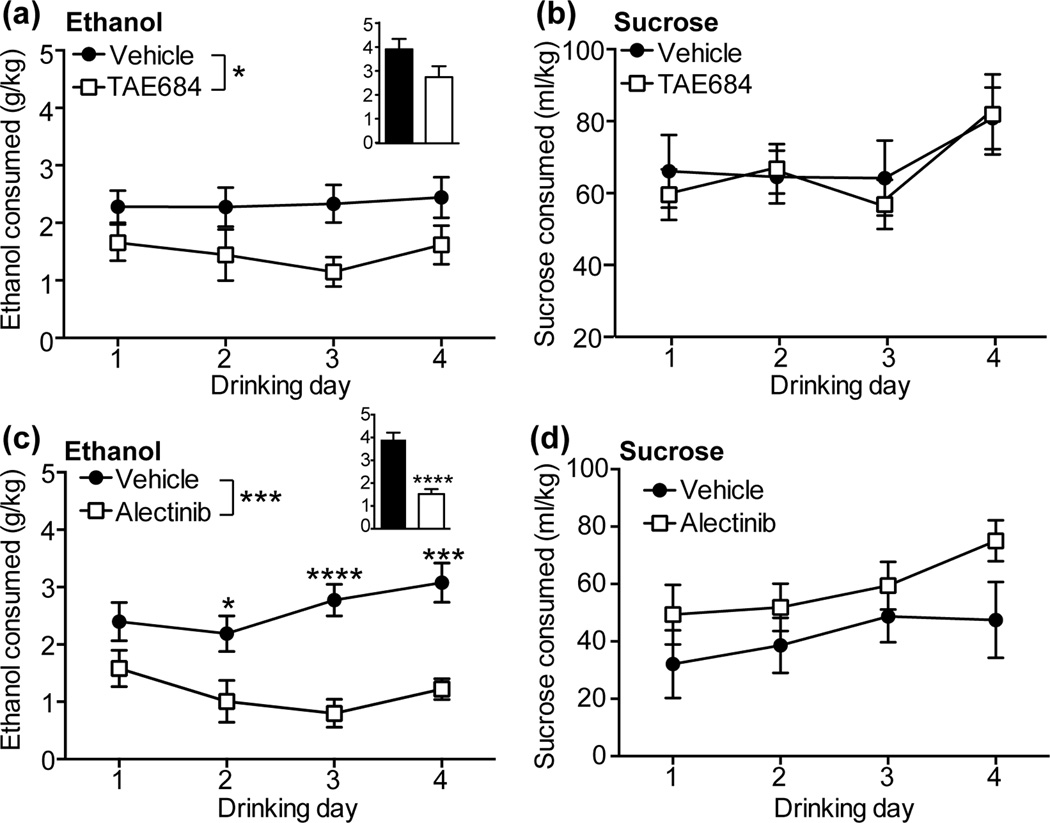Figure 1.
ALK inhibition attenuates binge-like ethanol consumption. (a) Ethanol consumed (g/kg) during 2 h of drinking on days 1–4 in mice treated with vehicle (n=12) or 10 mg/kg TAE684 (n=12). TAE684 treatment led to an average 37% decrease in ethanol consumption compared to vehicle treatment over 4 days. Inset bar graph shows the amount of ethanol consumed during 4 h on day 4. (b) Volume of 2% sucrose solution (ml/kg) consumed during 2 h of drinking on days 1–3 and 4 h on day 4 in mice treated with vehicle (n=10) or TAE684 (n=10). (c) Ethanol consumed during 2 h of drinking on days 1–4 in mice treated with vehicle (n=10) or 60 mg/kg alectinib (n=10). Alectinib treatment led to an average 61% decrease in ethanol consumption over 4 days. Inset bar graph shows the amount of ethanol consumed during 4 h on day 4. (d) Volume of 2% sucrose consumed during 2 h of drinking on days 1–3 and 4 h on day 4 in mice treated with vehicle (n=5) or alectinib (n=5). *p < 0.05, ***p < 0.001, ****p < 0.0001 by 2 way ANOVA or t-test.

